What are food additives, and how do you know which ingredients to avoid in food? Work your way through this list of the top 10 ingredients to avoid, with real food alternatives.
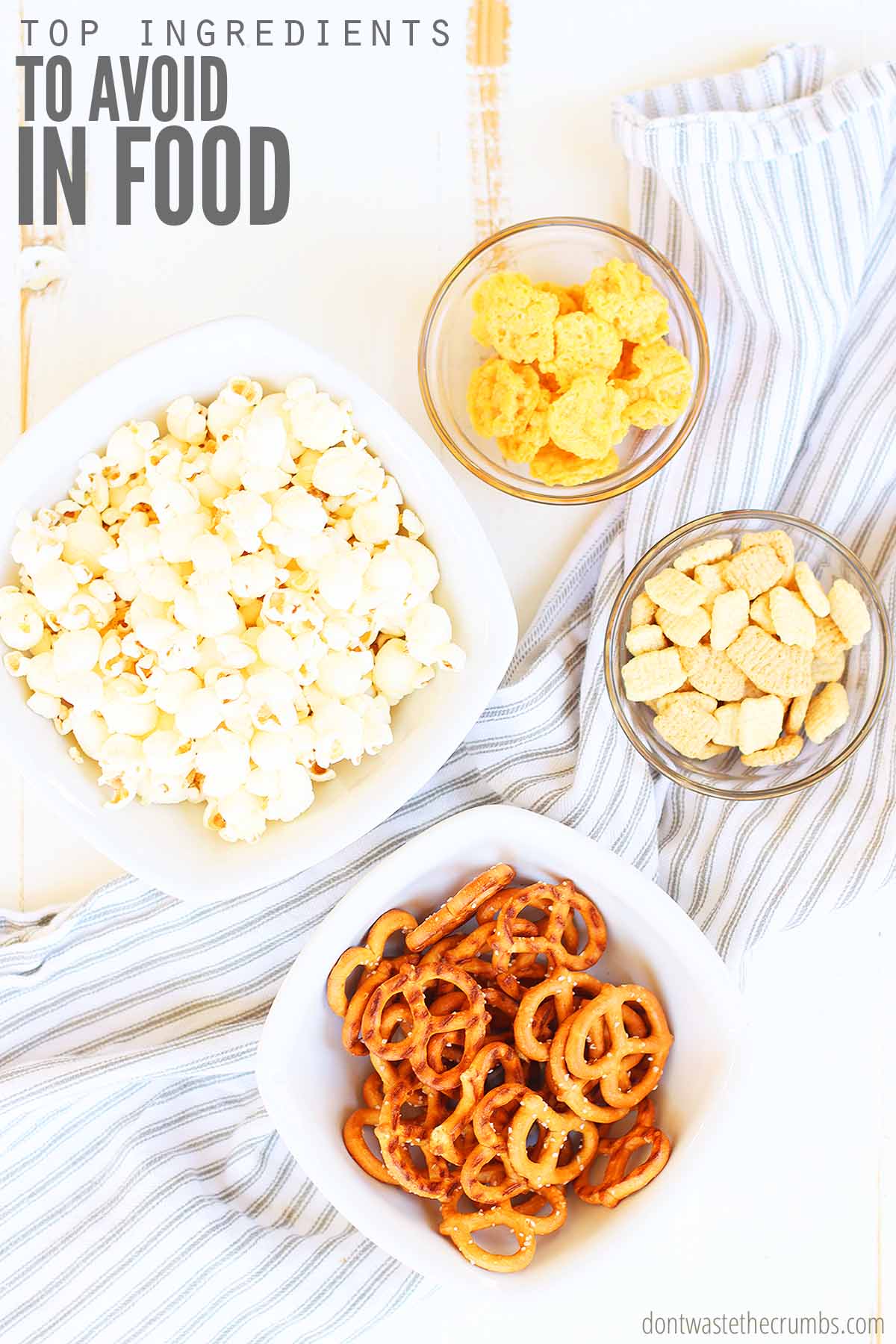
I love lists. I love making them, I love looking at them and I love working with them.
I ESPECIALLY love crossing things off of them.
Confession: I’ve totally added something to my to-do list AFTER I had already done it, just so I could cross it off!
Lists help get things done, and if “get healthy” or any other various deviation of that is one of your goals this year, then listen up. I’ve got a list for you.
I’ve done lots of research over the years on what ingredients are unhealthy and which ones are okay. Sugar. Processed fats. Preservatives. Colors. Morphed minerals that make our brains go crazy (literally)…. and that doesn’t even touch the surface of health and beauty items, or the icky stuff in your home.
After sorting through it all, I consider these to be the top additives to avoid in food.
This list should help you decipher what food additives are okay to deal with and which you should put your foot down on. Remember though – this is just my opinion and a broad overview of what’s out there. This list is not exhaustive, but I’m hoping it’ll help out a little bit the next time you turn a tub of something around and wonder, “What in the world is that and why is it in my food?!”
I’m listing these according to what I consider to be the worst offenders, so I personally recommend starting at the top and working your way down. If you are overwhelmed with life and only have 10 minutes to spare, start at the top. When you’ve digested the fact that some of your favorite foods could be causing your health issues, come back and work on #2.
But even if you never make it past #1, you’ll still have made serious progress. Your kitchen will be healthier and now you know about one of the worst ingredients you could eat. It’s all about baby steps, and when you take those steps at your own pace, you’re much more likely to keep going forward.
A few practical tips to help you make changes in your home:
- If the budget is a concern (as in you can’t throw away something because you can’t afford to replace it), then pledge to use it up and avoid the ingredient when you replace it.
- If getting your family on board is a concern, slowly wean them off instead of going cold turkey (i.e. one box of crackers each month instead of one box each week).
Top Additives to Avoid in Food
Without further ado then, here are my top additives to avoid in food.
#1. HYDROGENATED OILS
Also known as trans fats, hydrogenated oils are created in a lab. Food scientists take oil (any oil, but most commonly palm, kernel, soybean, corn, or coconut oil), inject it with a metal (nickel, platinum, or aluminum) and the end result is either a semi-solid or solid oil.
Now a disclaimer – there ARE some naturally occurring trans fats in dairy products and meat. It’s just how the animal digestive system works. But those naturally occurring trans fats aren’t a concern – it’s the man-made, industrial trans fats that we need to avoid (and this article is an easy read to understand why).
Manufacturers try to trick us into thinking we’re not consuming trans fat (because why would we think that these differently named items are really the same thing?) and just about every medical organization agrees that trans fat is bad for you.
New York City even banned trans fats, back in 2008, from all of its restaurants.
Can you imagine what your body has to do in order to process this almost plastic substance through your bloodstream?!
It’s no wonder why trans fat causes all sorts of health problems. It raises your bad cholesterol (LDL), lowers your good cholesterol (HDL), clogs your arteries (imagine soaking up dry flour with a sponge), is a major contributor to type 2 diabetes, and it’s been linked directly to coronary heart disease.
Wowzers.
Now I need to pause for a moment and interject some common sense here. I am not saying that if you drink coffee creamer with hydrogenated oils you’ll get heart disease, diabetes, or high cholesterol. I’m not saying that at all.
What I am saying is that coffee creamer is comprised of a key ingredient that causes heart disease, diabetes, and high cholesterol.
And I do know this: Cutting it out can only be good for your body!
On a food label, you’ll see these oils listed as:
- partially hydrogenated
- fully hydrogenated
- hydrogenated
- interestified
MONOGLYCERIDES
What it is: Similar to trans fat, these are fats that have been heated and treated in such a way that the molecules in the end result have been rearranged to an unnatural position.
Is it okay to eat? No. The process of creating these is eerily similar to trans fat, which I avoid like the plague. I would treat monoglycerides and diglycerides the same.
DIGLYCERIDES
What it is: Similar to trans fat, these are fats that have been heated and treated in such a way that the molecules in the end result have been rearranged to an unnatural position.
Is it okay to eat? I don’t think so. The process of creating these is eerily similar to trans fat, which I avoid like the plague. I would treat monoglycerides and diglycerides the same.
These fats are EVERYWHERE in processed food. When we first cleaned them out of our home, we found them in:
- crackers (saltine and others) (swap with homemade cracker recipe)
- granola bars (swap with a flexible homemade granola bar recipe)
- cookies (swap with our go-to homemade cookie)
- microwave popcorn
- hot cocoa (swap with hot cocoa from scratch)
- bbq sauce (swap with homemade bbq sauce)
- salad dressings (swap with more homemade recipes)
- coffee creamer (swap with my current favorite coffee creamer EVAH!)
Did you notice that last one? Back when I started to seriously re-think what my family was eating, I started to read more labels. When I asked myself, “What’s this stuff made of?” I realized that 98% of my coffee creamer was made up of 3 ingredients: water, sugar (many also have high fructose corn syrup), and partially hydrogenated soybean and/or cottonseed oil.

WHAT CAN I USE INSTEAD OF STORE-BOUGHT COFFEE CREAMER?
When I first discovered the nasty truth hidden in my cup of coffee, I stopped drinking coffee creamer and simply went to black coffee. I usually do like it like that. However, there are some days when you need to mix it up.
So, I created my homemade vanilla bean creamer. Made with vanilla bean powder, or vanilla extract, and only natural sweetener (maple syrup), this stuff even tastes better than the store-bought stuff! You can even make it dairy-free with almond milk, for example! And it’s a really easy switch to get rid of a product full of hydrogenated oil.
#2. HIGH FRUCTOSE CORN SYRUP
Ugh. High fructose corn syrup (HFCS) is the Dr. Evil of sugar. It’s sugar that has been cooked down into a super-sweet concentration of sugar and it’s highly addictive.
HFCS makes white sugar look like an angel!
On a food label, high fructose corn syrup can be listed just like that or it can be abbreviated as HFCS.
Like hydrogenated oils, it’s in a myriad of foods:
- bread (our favorite homemade bread recipes)
- mayonnaise (use my homemade version instead)
- ketchup (homemade recipe)
- prepackaged meals, both frozen and shelf-stable
- cereal (what we eat instead)
- crackers (homemade recipe)
- soup (delicious homemade recipes)
- yogurt (make it yourself)
- soda
- jams/jellies (we make our own fruit butter)
#3. ARTIFICIAL SWEETENERS
Artificial sweeteners (beyond HFCS) are super-common in foods labeled as “diet” or “sugar-free.” Yes, technically these foods don’t have sugar. But that doesn’t make them healthy.
When manufacturers remove sugar from food, it doesn’t taste quite as good. To make the food palatable AND still label it as “healthy,” they sweeten it with artificial sweeteners.
Here are the top two offenders among artificial sweeteners that you should avoid in foods:
- aspartame
- acesulfame potassium
ACESULFAME POTASSIUM
What it is: Artificial sweetener, commonly found in the little pink packets.
Is it okay to eat? No. Found to produce lung, breast, and organ tumors in rats, as well as leukemia and chronic respiratory disease. Humans exposed to acesulfame potassium over the long term have experienced side effects such as headaches, inflammation, and gut health changes.
FRUCTOSE
What it is: An artificial sweetener usually derived from corn.
Is it okay to eat? No. It’s been shown to contribute to obesity, cardiovascular disease, liver disease, cancer, arthritis, and elevated blood pressure. When creating high fructose corn syrup, manufacturers start here.
SUCRALOSE
What it is: An artificial sweetener, commonly found in little yellow packets. Also known as Splenda.
Is it okay to eat? No. Sucralose has been proven to cause several serious medical conditions including seizures, dizziness, migraines, blurred vision, and gastrointestinal problems. It also increases blood sugar and causes weight gain.
SUGAR
What it is: Sugar.
Is it okay to eat? No.
There are others to avoid too, like glucose, dextrose, and even sorbitol, mannitol, and erythritol. But we’re taking baby steps here and adding them all into the mix can get overwhelming.
And if we’re being honest, if you eliminate hydrogenated oils AND high fructose corn syrup AND aspartame AND acesulfame potassium, you probably won’t have many foods left in your kitchen that even have ingredient labels anyway. So that’s good news!
The bad news is that artificial sweeteners can still be lurking in foods you wouldn’t think would have sugar, like:
- yogurt (make it yourself)
- breath mints & gum
- instant breakfasts, teas, and coffee
- juice
- milk drinks
- and of course, items labeled sugar-free or diet
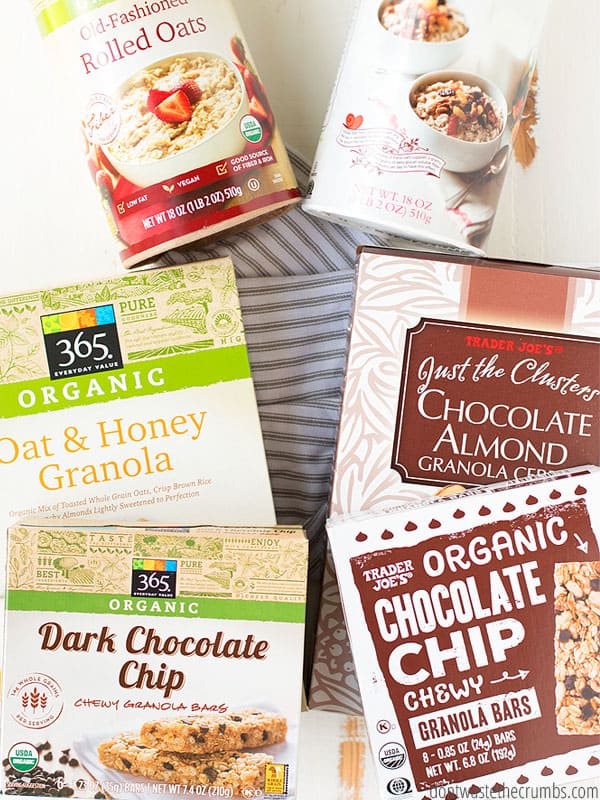
#4. ARTIFICIAL PRESERVATIVES IN FOOD
The goal of artificial preservatives is to make your food last longer. However, if we’re being honest with ourselves, do we REALLY want our food to be edible three years after we buy it? Would it even TASTE good? Just think about what has to be done to the food to make it last that long…
I shudder to think about it, and you should too!
Like artificial sweeteners, there are A LOT of artificial preservatives in food. Some are worse than others, and there are some that haven’t even been tested well enough to offer insight either way.
For now, here are the top two I recommend avoiding:
- Sodium nitrate (and sodium nitrite)
- BHA (butylated hydoxyaisole)
Nitrates are most commonly found in processed meats like lunch meat, bacon, and sausages and has been linked to cancer, so it’s best to avoid. The natural alternative is to choose foods that use a more natural method to preserve (like celery juice or salt or sugar) and to consume those in moderation. (Read more about nitrates/nitrites.)
BHA slows the rancidity of oils in food and animal testing has led the U.S. Department of Health and Human Services to consider BHA to be “reasonably anticipated to be a human carcinogen.” This preservative is most often found in chips, cereals, gum, and vegetable oil.
#5. MSG (MONOSODIUM GLUTAMATE)
Far beyond Chinese take-out, MSG enhances the flavor of many foods. The kicker is that MSG is a excitotoxin, literally causing the cells of the brain to be excited to death, which can be a trigger for certain neurological diseases. (source)
There are other side effects too – like headaches, nausea, drowsiness, and fatigue – that can be both short-term and longer-lasting (depending on how much MSG is consumed). Some may have stronger sensitivities to MSG than others, but the negative side effects are still present.
Have you ever eaten Chinese food and felt tired an hour or two later? MSG is likely the culprit, and unfortunately, these list of ingredients ALWAYS contain MSG:
- autolyzed yeast
- calcium caseinate
- gelatin
- glutamate
- glutamic acid
- hydrolyzed protein
- monopotassium glutamate
- monosodium glutamate
- sodium caseinate
- textured protein
- yeast extract
- yeast food
- yeast nutrient
I can’t even begin to tell you what foods might have MSG because it’s everywhere. I’ve seen it in seasonings, frozen meals, meats, soups, and even baby formula. This one is also tricky to implement since there are so many different names for the same thing.
Honestly, I avoid anything that has “glutamate” (which covers four items listed) and “yeast ___” or “___ yeast” (which covers another four). I feel pretty good about my odds with this strategy, despite it not being 100%. Fortunately, by this point, there are very, very, VERY few items left in the house with an ingredient label to read!
#6. CARRAGEENAN
What it is: Used as thickeners often in dairy products, it’s extracted from red seaweed and contains no nutritional value.
Is it okay to eat? No. Exposure to carrageenan causes inflammation throughout the body, which can lead to heart disease, diabetes, cancer, inflammatory bowel disease, rheumatoid arthritis, and arteriosclerosis. Carrageenan is so effective at causing inflammation that it’s used to test anti-inflammatory drugs.
Note: At this point, eliminating the top 6 food additives will by default also eliminate many on the rest of the list. There is no such thing as perfect, but just continue to do your best as time goes on. Even though I’ve been on a real food journey for well over a decade, food additives still end up in my house. Sometimes it’s by accident, sometimes it’s by choice for a season. Just keep moving forward, even if those steps are small!
#7. PETROLEUM-BASED ADDITIVES
POLYSORBATE 80
What it is: An emulsifying agent made of corn, palm oil, and petroleum that does not ever spoil.
Is it okay to eat? No. It’s been linked to infertility and ovary deformities in animals. It’s also shown links to Chrone’s disease and other bowel issues.
ARTIFICIAL FOOD DYES
What it is: These synthetic dyes derived from petroleum fall under names like Red 3, Red 40, Yellow 5, Yellow 6, Blue 1, and so on, and are found in brightly colored foods like juice, cereal, and cupcakes.
Is it okay to eat? No. Synthetic food dyes can make children vulnerable to hyperactivity and other behavioral problems, including inattentiveness and restlessness.
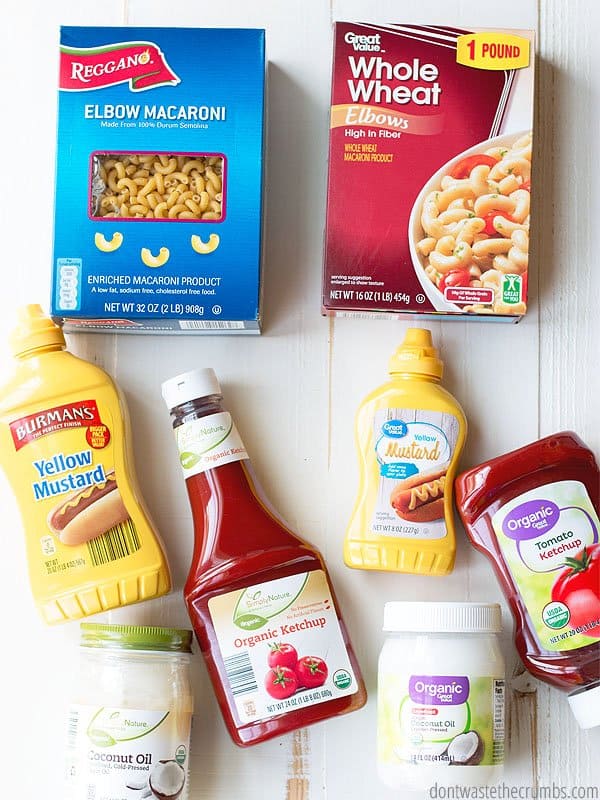
#8. EMULSIFIERS AND SYNTHETIC VITAMINS
SOY LECITHIN
What it is: The sludge left over when raw soybean oil has gone through the “de-gumming” process.
Is it okay to eat? No. As a waste product, it’s filled with chemical solvents used in the manufacturing process, specifically hexane. This compound can cause dizziness, nausea, and headaches. As a derivative of soy, it’s also likely genetically modified, unless it is specifically labeled organic.
VITAMIN A ACETATE
What it is: Synthetic form of Vitamin A.
Is it okay to eat? No. I don’t believe in eating any form of synthetic vitamins when it’s too easy to consume real foods that offer the real thing.
VITAMIN A PALMITATE
What it is: retinyl palmitate (preformed vitamin A)
Is it okay to eat? Maybe. We need Vitamin A and it is found naturally within the fat of food. Unfortunately too much of a good thing can be bad. Overconsumption of Vitamin A can cause severe headaches, blurred vision, nausea, dizziness, muscle aches, and problems with coordination. This most likely occurs when consuming preformed Vitamin A which is what you find as a food additive.
#9. ARTIFICIAL COLORINGS
ANNATTO
What it is: An orange-yellow food coloring extract from the seeds of the Boxa Orellana tree.
Is it okay to eat? Maybe. Some studies have shown that annatto can cause allergic reactions including headaches, irritability, and restlessness, as well as adverse reactions in the skin, gastrointestinal, airway, and central nervous system. This typically occurs when annatto is used in its natural form. This additive is sometimes used in its synthetic form and similar reactions have occurred.
CARMINE
What it is: Red/pink coloring derived from female cochineal beetles.
Is it okay to eat? Maybe. Shown to cause allergic reactions like sneezing, asthma, and even anaphylactic shock to those who are allergic to the bug.
TITANIUM DIOXIDE IN FOOD
What it is: A pigment used in candies and other processed foods to brighten colors, making the food more vibrant.
Is it okay to eat? No. Titanium dioxide particles can build up in the body and cause inflammation and neurotoxicity.
#10. OTHER FOOD ADDITIVES
MODIFIED CORN STARCH
What it is: A derivative of corn starch. The type of derivative depends on how it will be used.
Is it okay to eat? Maybe. It originates from corn, so there’s a good chance it’s GMO since 92% of corn in the US is genetically modified. There are other types of Food Starch derived from wheat, potatoes, rice, or tapioca.
CITRIC ACID
What it is: A compound created by the fermentation of either beet sugar or corn sugar while in the presence of fungus Aspergillus niger.
Is it okay to eat? Maybe. Avoid if you are allergic to the mold strain Aspergillus niger, or very concerned about GMO products (since it’s likely being fermented with either GMO sugar or GMO corn).
POWDERED CELLULOSE
What it is: Tiny pieces of raw plant fibers that have been processed in various chemicals.
Is it okay to eat? No. It’s an anticaking agent used to block out moisture to prevent shredded cheese or cheese cubes from sticking together, but you can avoid this by buying a large block of cheese and shredding it yourself.
Other food additives I personally would avoid if possible but aren’t deal breakers (in alphabetical order):
- Calcium Phosphate
- Disodium Phosphate
- Guar Gum
- Lactic Acid
- Locust Bean Gum
- Milk Protein Concentrate
- Natamycin
- Sodium Phosphate
- Vitamin D3
- Xanthan gum
Examples of food additives from natural sources that shouldn’t be much of a concern:
- Apocarotenal Powder
- Beta Carotene
- Malic Acid
- Pectin
Note that these explanations are very basic. I could write for days on each individual additive and how it affects the body and who should avoid it and why, so I’ll offer you this thought:
If you have specific gut issues or severe allergies, be sure to investigate the common food additives in your foods too. Many of those could be the cause of your symptoms.
The Center for Science in the Public Interest, or CSPI, is a good place to start if you’re wondering what a specific additive is, but be diligent and check other sources too.

HOW DO I REPLACE THESE FOOD ADDITIVES WITH REAL FOODS?
If you’re going through your pantry and removing items with harmful food additives, then you need some real food replacements. When you’ve stopped drinking coffee creamer, your best bet is to go black, make a homemade creamer, or simply use ‘cream and sugar,’ (a natural sweetener preferably).
Other items, like tortillas and peanut butter, can either be made from scratch (these tortillas are SO GOOD) or purchased if you are diligent in double-checking the ingredient list. Here is a list of 25+ real food snacks that are easy to make to help you avoid processed foods!
Sometimes healthier options are hard to find locally, so online grocery shopping is a good alternative. You can still price check and ingredient check when you shop online. I’ve found these sources to be pretty good on price and ingredients with minimal additives:
- Amazon – if you try one month free of Amazon Prime, you get free 2-day shipping and access to Prime Pantry for groceries.
- Thrive Market – Click here to see the Exclusive Offer for Crumbs readers!
- Vitacost – They often have good sales that include free shipping. Click on this Vitacost link to see what’s on sale.
THESE ARE MY TOP ADDITIVES TO AVOID – WOULD YOU ADD ANY FOOD ADDITIVES TO THIS LIST? MAKE ANY SUBSTITUTIONS? SHARE YOUR THOUGHTS!
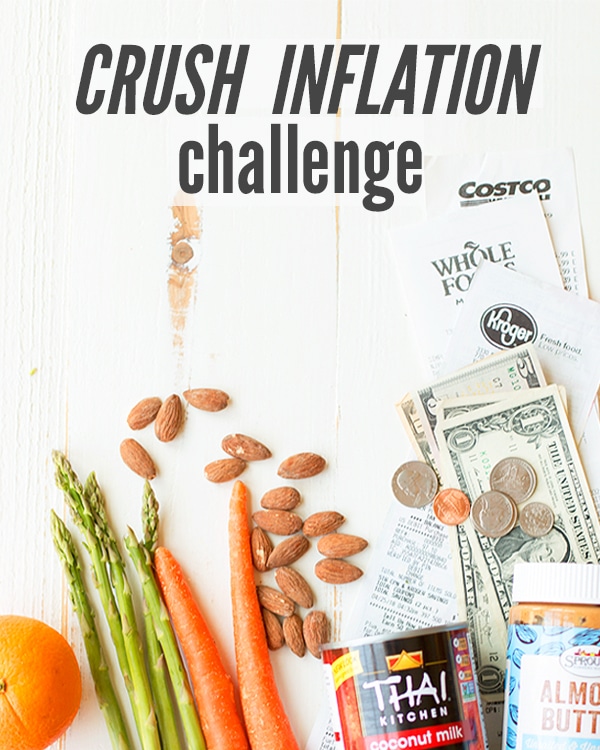
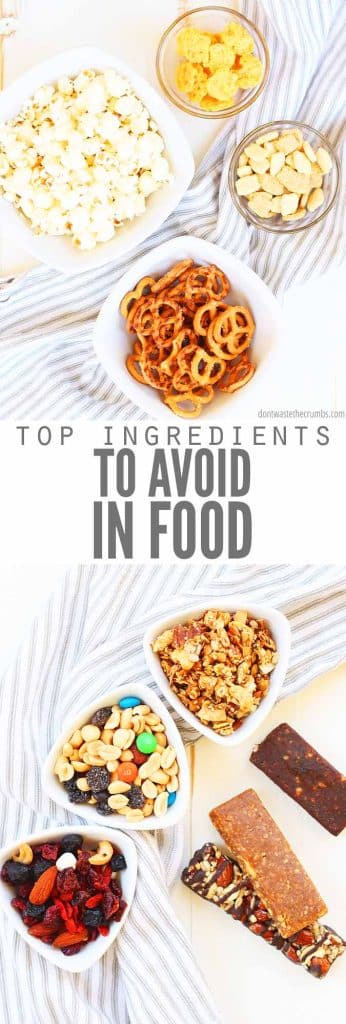


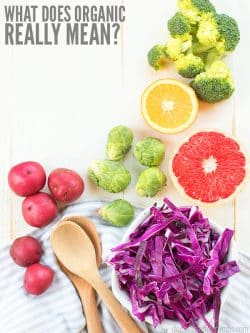
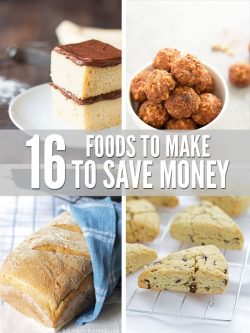
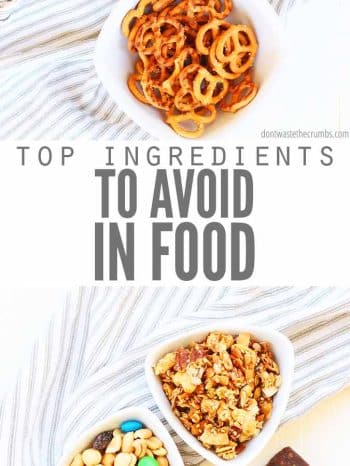
Hi Tiffany,
I love printing out your recipes. Is there any way I can delete the picture of the item that I am going to print? It seems like a waste of ink to print the picture.
Thank you.
Hi, just now saw your question. If you choose the print ‘button’ across the top of the preview you’ll see an option to deselect images as well as comments and notes and other stuff. I only have a black ink laser printer and I don’t find that my toner runs out all that faster. Basically recipes are all I use it for. But I take a two step approach. First, I save the recipe to my tablet(s) in an app designed for recipe saving. It’s called AnyList and it’s not available in a windows version, only Mac OS or iOS or iPadOS. Since we have a windows PC free household it’s quite easy. When I am saving recipes on my phone, any of my iPads or either computer it’s in the app. And available on all the others. Once in the app I can snip out any parts of the recipe I want. I usually keep the images which are very tiny. But I can remove them if I want by just printing straight to the printer after selecting options. For our household we use iPads in the kitchen to cook from, rather than using paper. I have one iPad mini I use exclusively in my kitchen just for meal planning, grocery lists and recipes. After reading about Bill Gates plans to forcibly inoculate people, force the eating of fake meat by restricting access to real meat I decided I’m not spending another penny supporting his company. I’m apple all the way.
I’m envisioning my future pantry and it looks quite bare. I’m excited and ready to learn more! Thanks for posting about this information.
In the High Fructose Corn Syrup category, would you also list regular corn syrup and light corn syrup?
Once you get a hang of real food, yes. At first though, when you’re JUST switching over, I’d worry about HFCS first.
I wanted to add my other group of 5 that are more advanced. Haha.
1. First on the list is gums. Most gums come from nefarious sources. And it is found in things that don’t need thickening like cottage cheese, or bottled dressing. Especially avoid xanthum. Comes from a bacteria exudate. Gross. Second, carrageenan. Some studies say it’s carncinogenic. Why chance it. It’s unnecessary.
2. Artificial flavors like vanillin. Made in labs not from plants.
3. GMO seed oils like canola and soy — soy oil was developed as an industrial lubricant. Canola was created from rapeseed, very bitter and toxic. GMO in general is bad but it’s hard to determine if what you eat ever ate any.
4 and 5. Antibiotics added to cheese and their buddies, the anticaking agents. We need less antibiotics in our water and it doesn’t help that they are added to shredded cheeses. Tillamook has none. And it has no anticaking agents. Yes, it clumps but pre grated cheeses are very useful especially if you freeze it. I’ve tried grating and freezing as well. Depends on what I need it for but I never ever buy it with additives.
Great tips Clairie – thank you for sharing!
I’ve been reading your recipes only a few days (needed school lunch inspiration!) and have been so excited to try lots of recipes! I’m very interested in you research into ingredients too. I’ve always bought simple real food but occasionally am drawn to something organic, seemingly simple and not easy to make at home. Example: puffed green peas snack sticks at Aldi in their simply nature line of foods. These have a fairly short ingredient list but one is expleller pressed oils, and they listed the seed but I don’t recall what it was. Do you anything about this type of oil? The process to make it? The process to get it though our bodies? Thanks!!
Hi Emily! Expeller pressed oils are made from putting the ingredient (soy, olive, coconut, etc.) under immense pressure. Imagine a bunch of olives being squished to smithereens, and the oil that oozes out would be expeller pressed olive oil. Not a bad option by any means, but the concern would be the heat caused by the friction of the press possibly harming the oil. If given a choice, cold pressed would be the better of the two options. 🙂
I completely agree with everything on this list! I have also weeded these things out of our house (except for the foods that other people give my kids!). We also very occasionally have bacon with nitrates. But, I definitely agree with your top picks. I had never heard of metals being injected into oil to make trans fats-that is truly terrible!
Great list of unhealthy ingredients.
Some studies show that every other organic or healthy product actually isn’t.
They are full of additives and hidden sugars.
If you put a ‘superfood’ or ‘healthy ingredients’ label on products, sales will increase for 50% at least.
I’m still learning and doing, but I’m doing. High Fructose Corn Syrup is my big one. So I make my own catsup and BBQ sauce. There are lots of recipes on line, just find one that your family likes, or make your own changes to it. So I appreciate all the home made recipes you have on line.
I would add:
Red food dyes listed as : cochineal, carmine, or carminic acid
Give deep red shade to fruit juices, gelatins, candies, shampoos, and more, come from the female Dactylopius coccus, an insect that inhabits a type of cactus known as Opuntia.
http://positivemed.com/wp-content/uploads/2012/04/Dactylopius-Coccus-Image-by-University-of-Turin-Italy.jpg
This is a great way to begin eating and living healthier, not only saying “eat whole foods” but explaining specifically why we avoid these certain ingredients.
Another great resource with easy recipes and ideas for how to eat in expensively is Nourishing Traditions by Sally Fallon and Mary Enig. This book explains in depth what Tiffany has outlined here in this article, plus it has tons of great and inexpensive meal options (aside from the higher cost of quality dairy and meat).
We have been eating this way for 2 years now and the skin problems, migraines, lethargy, moodiness, and other weird symptoms we used to experience are gone! It really will change your life.
I tried to look up “interestified” and found “Interesterified” instead, … the fatty acids have been moved from one triglyceride molecule to another, and is said to be even worse than hydrogenated fats — ICK!! I had never heard of this before and never would have looked for it, although I avoid all the rest mentioned. Thank you for pointing this one out! -Michelle G
It has taken two years but our pantry looks completely different than when I started changing what we eat. We have also been healthier than ever before and I know it’s from getting rid of items with these ingredients. You have helped me make further changes in what we eat and challenged me to further stretch our food dollars.
I want to encourage every one out there to start with just one item at a time. For me the first item was fruit bars. It took a couple of tries before I found ones that we liked and with the better ingredients. Then I changed our cereals but now we don’t even eat cereals except occasionally a bowl of Kashi Go Lean (high in protein). Then our bacon we changed to one without nitrates/nitrites. Just one step at a time forward means you are always making progress. 🙂
Excellent advice Cheryl, and way to go on those baby steps! That’s proof that over time they do add up!
Cheryl: I’m very interested in other foods you have cleared out of your pantry. I’m trying to make as mush homemade as I can. How did the pioneer ladies ever do it??
Any help from you would be greatly appreciated. thanks Linda
That list of ingredients that ALWAYS contain MSG is scary! But seriously, gelatin? So if I buy a box of unflavored gelatin, it contains MSG?
There are sources of gelatin that would not have MSG. Vitacost (online retailer) has a few that are good and you can even use it to make your own “jello”.
Katie – I’m agreeing with Cheryl here and believe the list is citing “gelatin” on most lables rather than that found from a quality source. Great Lakes (the brand I have) and Vital Proteins both offer animal-based gelatin.
YOu may want to examine your sources (such as the one for MSG, especially if they are written by Dr. Mercola—known for peddling questionable items. Look him up: ” Joseph Michael Mercola (born 1954) is an alternative medicine proponent, osteopathic physician, and web entrepreneur, who markets a variety of controversial dietary supplements and medical devices through his website, mercola.com.”
He is one of the charlatans who peddles the idea that autism can be caused by vaccines—a falsity that has been disproven by EVERY SINGLE medical study here and in Europe. In fact, the British doctor who first proposed that theory was found to have falsified his data and is no longer allowed to practice medicine.
I think MSG has its problems, but if you are going to give nutritional advice, please use sources not shown to be questionable and shilling their own useless products…
From Mercola or not the hazards of MSG are well documented. I read the source and all info appeared to be accurate regarding the compound in question; it would be extremely easy to verify it all through other sites and sources.
I would add artificial colors. Food colouring is a toxin. In that I would include caramel colouring. I never used to because I thought it’s pretty basic to make caramel. But there are many processes to make caramel colouring and some of them are toxic.